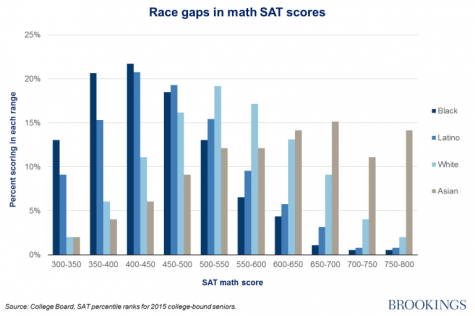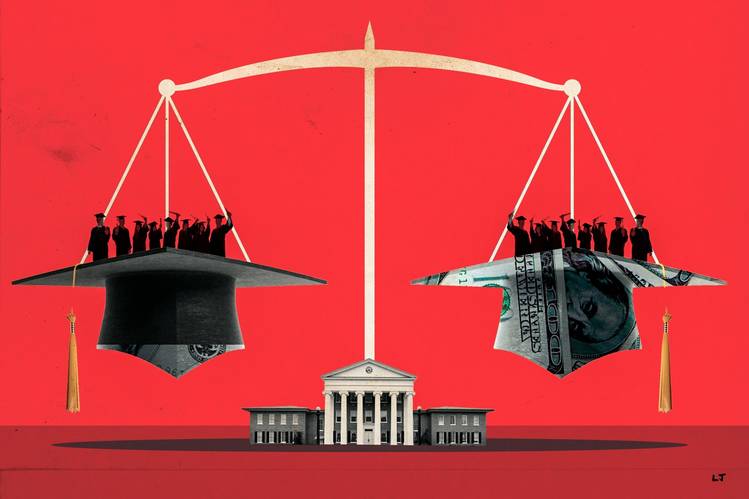A Bewildering Process
The college admission process is just as overwhelming, biased, and manipulative as ever before.
photo courtesy of L.J. Davids for the Wall Street Journal
The chance a student has to get into their dream school depends on their wealth, race, and family standing.
January 19, 2021
For the past six months, I’ve desperately wished that I had an older sibling to help me through the college admissions process. At its best, the process is stressful. At its worst, it’s confusing, overwhelming, and downright terrifying. I longed for someone who knew what they were doing, who understood the process’s complexities, and who could just guide me through it.
Well, I have a younger brother, but I have to admit that when the time comes for him to apply to college, I will be unable to be that mentor I craved. That’s primarily because I cluelessly muddled my way through the entire admissions process, and the only thing I’m sure of at the end of it is that it’s a fundamentally broken, bewildering system.
My first struggle with my applications was how unprepared I felt for the entire process. No one at school ever taught me how to make sure my letters of recommendations were downloaded correctly into the Common Application, no one ever explained how or when transcripts were sent to the colleges, and no one showed me or my peers what the recurring vague and confusing questions on the applications meant.
School counselors have made annual appearances in social studies classes for years, instructing us to start thinking about colleges, financial aid, and standardized tests. But we were never given any instruction or strategies on how to actually apply, and when the time came, most of us felt lost.
To be fair, when I had questions about my applications, the school counseling office was extremely accommodating and kind. However, considering that almost every student encounters the same struggles in their applications, it would be extremely beneficial for them to proactively guide the student body through the process– not just wait for individual students to send panicked emails.
What’s more concerning is that if we didn’t have adequate application support at a fairly affluent school like North Allegheny, imagine what little aid students at poorer school districts are receiving. In 2016, it was estimated that up to 85% of American schools did not have enough counselors to support their students. An alarming one in four schools do not have a single counselor in the building.
Additionally, this past spring, college fairs, high school visits, athletic recruitments, and standardized tests were cancelled. This loss of resources only made college prospects seem more uncertain for current seniors. As a result, college applications in 2020 were down by 8%.
But there are severe cracks in the college application process that are not just based on individual schools or support systems. They are rooted in generations of classism and racism, and they’re still impacting massive groups of students today.
One such obstacle is standardized testing. While many colleges have gone test-optional this year, scores are still a large part of an application and can be utilized for merit-based scholarships.
There has long been a substantial disparity between wealthy and low-income students’ standardized test scores. The lowest average scores on all sections of the SAT are scored by students from families who make less than $20,000 a year, while the highest averages typically come from students whose families make more than $200,000 a year.
Wealthy students often attend schools that better prepare them for the tests, and their families can afford outside resources, like tutors. About 75% of students in affluent areas receive some kind of ACT or SAT prep outside of the classroom. In New York City, private tutoring rates can range between $100 and $800 an hour.
Race also plays a role in standardized test scores, as Black and Latino students traditionally have lower average scores than their white counterparts. Like the wealth-gap, this is attributed to extrinsic prep and resources, but some psychologists believe that racial stereotypes may also impact a student’s scores. If someone thinks they are probably going to do poorly because of their race, they will most likely get a lower score.

Despite all of the inequalities in test scores, colleges and institutions themselves are perhaps the most influential perpetrators of biased and discriminatory admissions.
Many private schools in the United States offer prospective students free, short, automated applications with the hope that the students will see no harm in applying. The only problem is that the schools have no intention of accepting more students. They use the influx of applications to decrease their acceptance rates. A lower acceptance rate makes them appear to be more competitive and typically corresponds to a higher ranking on national rankings.
Since there is no outside party responsible for verifying college admission statistics, some institutions downright lie about their numbers. In the past decade, Bucknell University, Emory University, Claremont McKenna College, George Washington University, and Tulane University have all admitted to purposefully overestimating their number of applicants.
While this may not seem like a widespread issue, over 90% of college admission officers have said that they are occasionally skeptical of the statistics that their schools report.
Preying on students’ hopes of acceptance and blatantly lying to applicants is unethical at best. Educational institutions are expected to be the standard-bearers of truth and integrity in our country, but when it comes to admissions, they are anything but.
Not to mention, ancestry and familial history still play a dangerously large role in the admissions process.
That’s why the “Family Section” in all of my applications infuriated me the most. There was an option to check a box that indicated if anyone in your family had attended that college or university. In 2019, 42% of private schools and 6% of public schools in the United States utilized legacy admissions, where the admissions office shows preference to children or other family members of alumni over other applicants.
The fact that this concept still exists in the twenty-first century is unethical and inherently classist. It allows admission officers to act as gatekeepers to higher education, and it continues the vicious cycle of offering society’s rich and powerful the best education. No one’s chances at attending a college or university should be defined by their ancestry, especially when higher education has been historically designed to keep low-income and minority students out.
And while many prestigious institutions claim that legacy preferences are only utilized as tie-breakers, the actual truth is startlingly. A study conducted by Duke found that legacy applicants at Harvard University have a 34% chance at being accepted, compared to the school’s 6% overall acceptance rate.
We should all be wary of a higher education system that is ruled only by the white, wealthy, and elite. It impedes progress and opportunity. Diverse educational opportunities, on the other hand, promote productive conversations and effective solutions– they benefit everyone.
At the end of the day, students will never understand all the ins and outs of college admissions — even with the help of a million mentors — simply because it is an inscrutably subjective process. And they’ll never really love the system either, as it’s unpredictable and stressful.
However, they have every right to expect that the process to be fair. They have a right to expect that the colleges and universities they are planning on devoting their future to are not gaming the system. And every kid has the right to the resources and information they need to pursue higher education.












